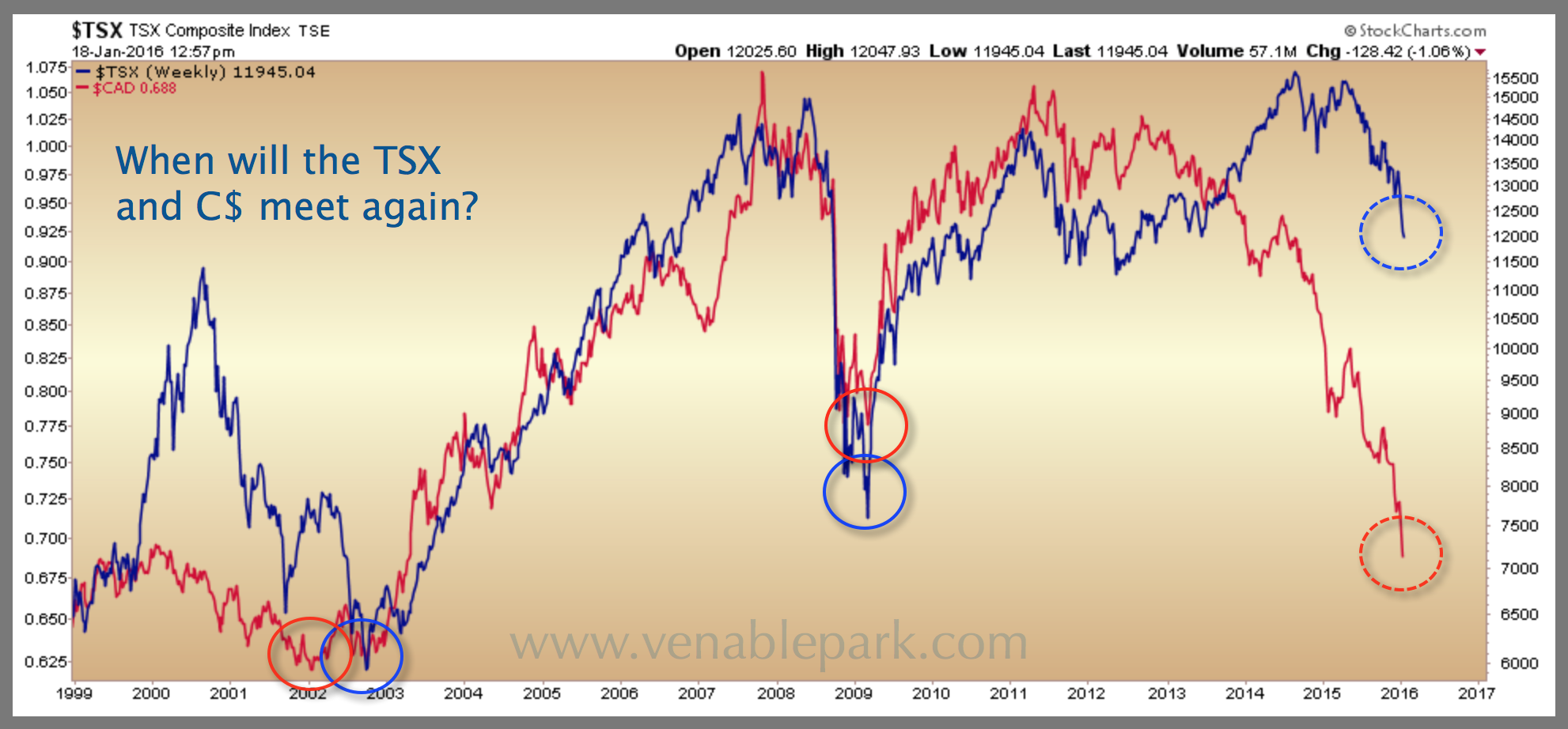With the US markets closed for MLK Day, the TSX has drifted below 12,000, while the loonie is so far having a morning of reprieve from what has been months of relentless selling. Near term oversold, a CAD bounce would be reasonable, even if temporary, so long as oil remains in free fall. But no trends last forever.
The global debt and securitization bubble that drove fossil fuels and other commodities outrageously high between 2005-2014, has been bursting since. A mean reversion to the 1999 $10-20 barrel level for West Texas Crude has to be possible, even if only temporary. But it’s important to note that currency tends to lead financial cycles.
The US dollar deteriorated with the nation’s balance sheet from 2002 to 2008, though it was not until the stock and corporate debt markets collapsed in 2008 that the consensus became convinced further U$ weakness was inevitable. By then of course, the currency cycle had already turned. Missing that the U$ had bottomed, cost the masses a fortune in losses on overly-confident commodity bets. With the commodity-centric C$ now below its 2009 lows, we should be cautious not to extrapolate this trend indefinitely either. The closer the loonie gets towards its 2002 all time cycle low, the greater the probability of its bottom this cycle as well.
The same can still not be said for the broad Canadian stock market. Shown here since 1999, as the C$ (in red) dives for a bottom, the TSX (in blue) remains vulnerable and still likely to catch down to the leading loonie. Unless ‘this time is different’…?
The 11,000 level (marked at blue band below) is the next big support test for the TSX. But with global QE experiments now spent (to infinity and beyond), 11,000 may prove fleeting at best. After the credit bubble, value is coming for those who can wait and know what to look for. And that is as it should be.




